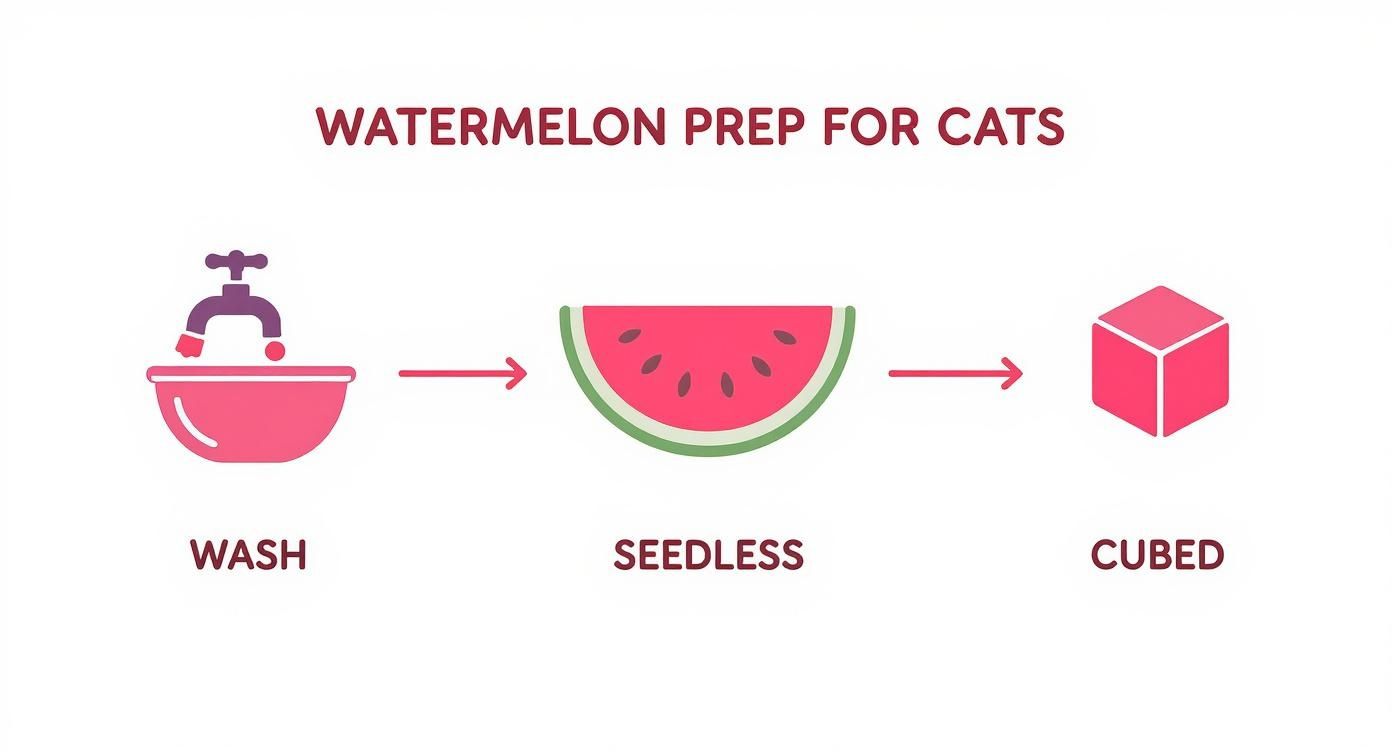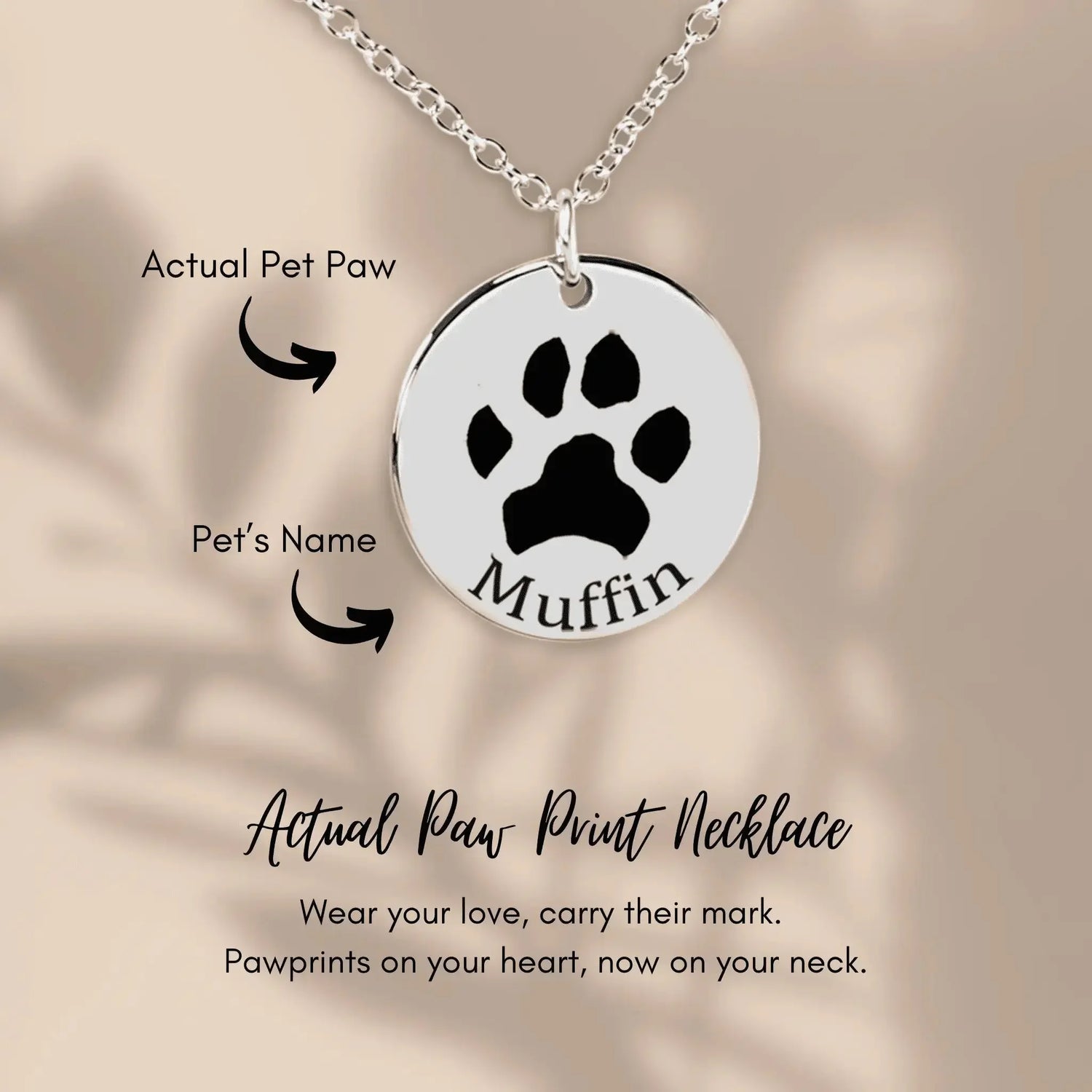Can Cats Eat Watermelon? A Vet-Approved Guide for Curious Kitties 🍉

Yes, your cat can eat watermelon, but there's a catch, cat-parents! It should only be the seedless pink flesh, served in tiny, cat-sized portions as an occasional treat. 🐾
While the juicy part is non-toxic, the seeds and rind are definite no-gos. Think of it as a rare, hydrating summer snack, not a staple in their diet. Our mascot, Floofie, gives it two paws up... as long as it's prepared purr-fectly!
Your Go-To Watermelon Safety Guide
So, you're enjoying a refreshing slice of watermelon on a hot day, and suddenly you feel a pair of eyes on you. Maybe a curious paw even reaches out. Our mascot, Floofie, gives us that exact look all the time! 😂
Before you share a piece of your snack, it's super important to know the rules of the game.
Cats are obligate carnivores, meaning their bodies are built to thrive on meat. But that doesn't stop their silly little brains from wanting to sample our human foods! Surprisingly, around 35% of pet owners admit to sharing fruit like watermelon with their cats, especially when it's warm outside. Since watermelon is about 92% water, it can be a fun way to sneak a little extra hydration into a kitty who's picky about their water bowl. You can learn more about how treats fit into a healthy feline diet at cornucopiapetfoods.com.
Watermelon for Cats Quick Safety Checklist
Before you share this summery snack, here’s a quick summary of the do's and don'ts. Floofie helped us put this together to keep things simple for his furry friends!
| Component | Is It Safe? | Key Takeaway |
|---|---|---|
| Pink Flesh | ✅ Yes, in moderation | This is the only part your cat should ever eat. It's hydrating but sugary, so keep the pieces tiny! |
| Seeds | ❌ No, never! | Seeds are a serious choking hazard and can cause dangerous intestinal blockages. Remove every last one. |
| Rind | ❌ Absolutely not! | The tough green and white rind is indigestible. It can lead to severe tummy trouble and blockages. Yikes! |
Stick to the safe stuff, and your furry friend can enjoy a refreshing, worry-free nibble.
The Hydrating Benefits of Watermelon for Cats
Let's be clear: watermelon isn't going to replace your cat's specially formulated kibble. But it has one amazing trick up its sleeve that Floofie can definitely get behind: hydration! 💧
Think of a tiny, seedless cube of watermelon as a juicy, refreshing bonus. It's especially useful for cats who are a bit stubborn about visiting their water bowl. With an impressive 92% water content, it's a clever way to sneak some extra fluids into your cat's diet. This little hack is a lifesaver during those scorching summer months when your kitty is more interested in napping on the cool tiles than drinking water.
A Splash of Goodness
Proper hydration is non-negotiable for cats. It keeps their kidneys humming along and their whole system running smoothly. A well-hydrated cat is a happy cat! If you want to dive deeper into this, understanding the broader implications of hydration and dehydration can offer some great insights.
Beyond the water, watermelon does contain a few vitamins. While cats don't strictly need these from a fruit source, a tiny amount won't cause any harm.
- Vitamin A is great for vision and skin health.
- Vitamin C acts as an antioxidant, though our feline friends are amazing and produce their own!
- Potassium helps support healthy nerve and muscle function.
The real win here is the water. For a picky drinker, a small piece of watermelon is like a fun, edible water balloon that supports their overall health when served as a rare treat.
Serve in Style
If you're going to offer this summery snack, why not make it an event? Serving a tiny, diced cube of watermelon in a special bowl can make treat time feel extra special. Floofie is a big fan of our Pawsitively Purrfect Ceramic Cat Bowls; they're the perfect size for a petite, juicy morsel! 😻
Ultimately, the best part of asking "can cats eat watermelon?" is discovering a fun, hydrating new snack. While it's no replacement for their regular meals, it's a sweet way to add a little extra moisture and fun to their day.
What Could Go Wrong? The Risks of Watermelon for Your Cat

Alright, let's have a real talk before your kitty dives headfirst into that juicy slice of watermelon. While the pink, fleshy part can be a fun and hydrating little treat, there are a few hazards hiding in plain sight that every cat parent needs to know about. Floofie wants his friends to be safe!
Think of it like this: preparing a snack for your cat is like being a personal chef for a very tiny, very carnivorous VIP. The details matter! The main dangers here are the rind, the seeds, and the sugar content. But don't worry, they're all super easy to avoid with a little know-how.
Rinds and Seeds are a No-Go
First thing's first: the rind is completely off-limits. That tough, green outer layer is fibrous and incredibly difficult for a cat’s digestive system to break down. Remember, our cats are obligate carnivores, built for processing meat, not tough plant matter. Swallowing a piece of the rind could lead to a nasty stomach ache or even a serious intestinal blockage. Big ouch! 🤕
It's a similar situation to certain houseplants that can be toxic or cause blockages, which is why it's so important to know how to keep cats away from plants that could harm them.
The seeds are just as problematic. Even though they're small, they pose a major choking hazard, especially for a small cat. They can also cause blockages if enough are swallowed. It's a risk that's just not worth taking.
Bottom line: Only the seedless, pink flesh gets the green light. Never, ever let your cat chew on the rind or get ahold of the seeds.
Mind the Sugar
Finally, let's talk about the sweet stuff. Watermelon's sugar is all-natural, of course, but it's still sugar. Your cat’s body simply isn't designed to handle it. In fact, cats can't even taste sweetness! 🙀
Too much sugar can easily lead to an upset stomach, diarrhea, or vomiting. And for cats who are already overweight or dealing with a condition like diabetes, sugary treats are a definite no. It’s always safer to stick with species-appropriate snacks.
By keeping these three things in mind—rinds, seeds, and sugar—you can make sure this summer treat is a fun, safe, and refreshing experience for your furry best friend.
How to Safely Prepare Watermelon for Your Cat
So, you're ready to share this juicy summer snack with your curious kitty? Awesome! Let's just make sure we do it the right way. Floofie insists!
Following a few simple steps ensures that every little bite is not only delicious but also completely safe for your furry best friend. Think of yourself as your cat’s personal chef for a moment—it’s super easy and just takes a minute.
It’s all about getting rid of the risky parts and serving up only the good stuff. With the right prep, you can sidestep any potential tummy troubles or hazards. Speaking of hazards, making sure your home is free of other potential dangers is just as important. You can learn more by checking out our guide on how to cat-proof your home for total peace of mind.
The Purr-fect Prep in Five Easy Steps
Here’s a quick, step-by-step guide to get that watermelon ready for your cat. Let's make this treat time a five-star experience! 🌟
- Wash It Well: First things first, grab a fresh, ripe watermelon. Give the outside a good rinse under running water to wash away any pesticides or dirt before you slice into it.
- Cut with Care: Slice off a small piece of the bright pink flesh. You'll want to cut a section far away from the rind to get the best part.
- Ditch the Seeds: This is the most important step! Meticulously remove every single seed. No exceptions! Seeds are a serious choking hazard and contain compounds that are no good for cats.
- Remove the Rind: Carefully slice away all of the tough green and white parts of the rind. A cat's digestive system isn't built to handle it, so it's best to remove it completely.
- Chop It Up: Finally, chop the seedless, rind-free flesh into tiny, kibble-sized cubes. Small pieces are much easier and safer for your cat to eat.
A good rule of thumb is to keep the pieces small enough that they don't pose a choking risk. Think the size of a pea or a very small dice!
Once you've followed these steps, you’re ready to serve! For an extra special touch, you can present this summery delight in one of our adorable and durable cat bowls. Just remember, portion control is key—one or two tiny cubes are plenty for a rare, refreshing treat.
Exploring Other Cat-Safe Fruit Treats
So, your cat tried watermelon and is now a certified fruit fanatic! Or maybe they gave it one sniff, flicked their tail, and walked away with total disdain. Either way, it’s a great time to explore the wider world of cat-safe fruits. 🍓
Knowing which fruits are okay can make you feel like a super-savvy pet parent. While watermelon is a fun, hydrating option, other fruits offer their own unique (but still very minimal) perks for our little carnivores. It’s like creating a tiny, exclusive fruit salad bar just for your cat. Floofie approves of this fancy foodie adventure!
A Fruit Bowl Fit for a Feline
Let's see how watermelon stacks up against a few other popular choices. Remember, the golden rule for all fruit is moderation, moderation, moderation! This simple chart breaks down what you need to know about each fruity treat.
This infographic shows the simple, three-step process for safely preparing watermelon for your cat.
The key takeaway is that proper preparation—washing, removing all seeds, and cubing—is non-negotiable for your cat's safety.
Cat-Friendly Fruit Bowl A Quick Comparison
See how watermelon stacks up against other fruits that are generally safe for cats in small amounts.
| Fruit | Safety Level | Key Benefit | Preparation Notes |
|---|---|---|---|
| Watermelon | ✅ Safe | Hydration Boost (92% water) | Must be seedless and rind-free. Cut into tiny cubes. |
| Cantaloupe | ✅ Safe | Vitamin A & C | Also must be seedless and rind-free. Serve in small pieces. |
| Strawberries | ✅ Safe | Antioxidants & Fiber | Remove stems and leaves. Dice into small, manageable bits. |
| Blueberries | ✅ Safe | Antioxidants & Vitamin K | A great small size already! Just wash and serve one or two. |
As you can see, the theme is always small, seedless, and rindless portions. Sticking to these rules helps keep treat time safe and fun for everyone.
Beyond fruit, many cat owners seek other safe green treats to offer. For a comprehensive guide on a feline favorite, you can learn how to grow catnip grass for your feline friend. It’s another fun way to add variety to their environment. And if you're just starting your journey as a pet parent, our complete guide for the first-time cat owner has tons of useful tips
Your Watermelon Questions, Answered
Got more questions about your cat and this juicy summer fruit? We thought you might! Floofie helped us gather the most common curiosities we hear from cat parents.
How Much Watermelon Can My Cat Actually Have?
Think of watermelon as a tiny, special treat, not part of their regular diet. One or two small, bite-sized cubes—about the size of a gaming die—is plenty for one sitting.
A good guideline is the 10% treat rule, which says treats shouldn't make up more than 10% of your cat's daily calories. But with a sugary fruit like watermelon, it's wise to be even more conservative. A little nibble once or twice a week is the perfect summer surprise.
Is Watermelon Safe for Kittens?
It’s best to skip the watermelon for kittens. 🐱 Their tiny digestive systems are still under construction and can be super sensitive to new or strange foods.
Kittens need a diet packed with specific nutrients to fuel all that growing they're doing. For now, stick to high-quality kitten food and always check with your vet before introducing any "human" snacks. Let's keep the little floofs safe!
What if My Cat Accidentally Eats the Rind or Seeds?
First off, don't panic. If your cat just nabbed a tiny piece of rind or a single seed, they'll most likely be just fine. Just keep a close eye on them for the next 24-48 hours. Watch for any signs of an upset stomach, like vomiting, diarrhea, or unusual tiredness.
If you spot any of those symptoms, or if you know they ate more than just a tiny bit, it's time to call your veterinarian right away for advice. When it comes to our furry family, it’s always better to be safe than sorry.
Should Some Cats Avoid Watermelon Completely?
Yes, absolutely. For some cats, watermelon is a definite no-go.
- Cats with diabetes should never eat watermelon because of its sugar content.
- Overweight cats don't need the extra, empty calories.
- Cats with sensitive stomachs or kidney problems shouldn't have it unless their vet gives the all-clear.
Always put your cat's specific health needs first, even when it comes to fun treats!
Feeling like a treat-time pro? At FloofChonk, we're all about making every moment with your cat special. Explore our collection of paw-approved toys, accessories, and apparel to celebrate your favorite feline. Check out the full collection at https://www.floofchonk.com

